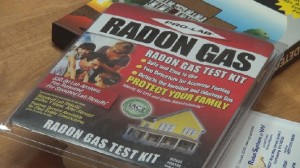 By the end of 2014, Radon gas will have claimed the lives of over 22,000 Americans since it is a direct cause of lung cancer. The most unfortunate part about that is most who are diagnosed with lung cancer have absolutely no clue it even exists, or that it’s a significant health risk.
By the end of 2014, Radon gas will have claimed the lives of over 22,000 Americans since it is a direct cause of lung cancer. The most unfortunate part about that is most who are diagnosed with lung cancer have absolutely no clue it even exists, or that it’s a significant health risk.
To put that into perspective a little more, radon is the second leading cause of lung cancer in many countries including the U.S. – second only to smoking. However, for non-smokers it is the leading cause of lung cancer.
That is why the United States Government, pushed by health agencies across the country, has declared October 20th through the 26th National Radon Action week. The idea is to boost awareness about the many health risks that radon gas poses and to educate homeowners on how to test their residence for it, and how to take action if a problem is discovered.
What is Radon? Why Do We Need National Radon Action Week?
It’s great to hear that the government is actually getting involved, but what is national radon action week for? Why is it such a big deal, and what is radon? These are likely some of the questions you may have, so we’ll start at the beginning.
Radon is a radioactive gas with no color, no taste and no smell. It is virtually indetectable unless you have a proprietary testing kit handy. Luckily, you can purchase DIY radon test kits at a local hardware store or online. You can also hire an experienced radon professional to test your home for you, which is a great idea because if elevated levels are discovered they can walk you through what comes next – the mitigation process.
Radon is a natural radioactive decay product of Uranium and other elements, which commonly exist in the soil and ground beneath our feet. Once released, the radon daughters – or gas – will seep up from the ground and into homes through cracks in the foundation, walls and flooring. Once inside it will collect in great amounts and continue to undergo radioactive decay. If people come into contact with high exposure levels, the radon daughters can enter their lungs and cling to the inner linings. This ultimately results in the nearby cells becoming exposed to radiation, causing cancer to form.
There are no short term symptoms of radon exposure just as there are no short term symptoms of lung cancer. In fact, by the time most people are diagnosed with lung cancer the disease has progressed beyond a curable state. That is why it is imperative that you take action sooner rather than later. That’s exactly why National Radon Action Week is important.
October 20th-26th, 2014 is National Radon Action Week
Since it is declared “national radon action week,” the focus will be on how families can combat the problem as opposed to teaching folks what radon actually is. The hope is that it will encourage U.S. residents to better understand that radon is a real threat, and that it can be a problem anywhere – regardless of geographical location. If you need more information about radon gas and the health threats it poses, you can find out plenty at Radon Resources.
As for testing your home, many companies, including SWAT Environmental are offering free radon testing kits during National Radion Action week to residents who are looking to do so. Take advantage of the opportunity now while you can, and have your home tested as soon as possible.
If you need to, you can find more information here about radon, testing and mitigation. You can also contact your local health department to find out more about local events during National Radon Action week.
Via: Central Jersey


